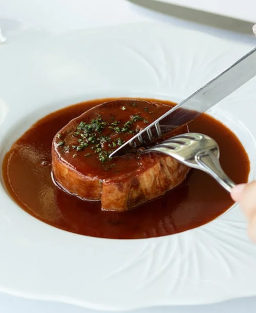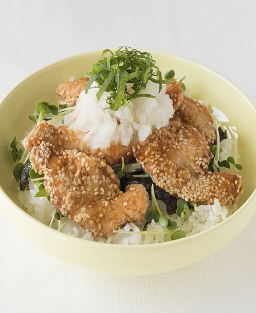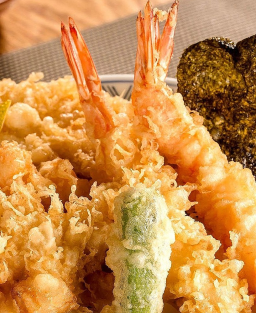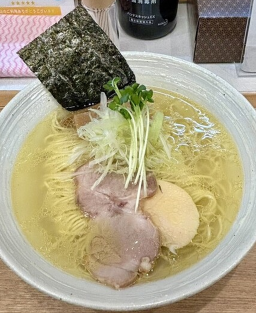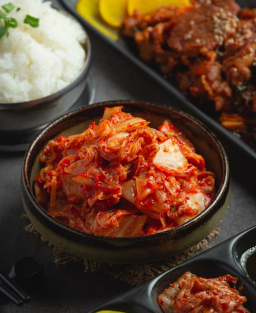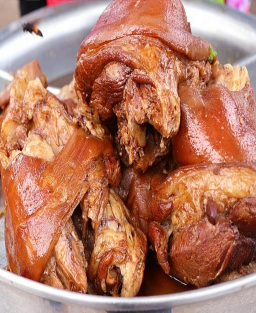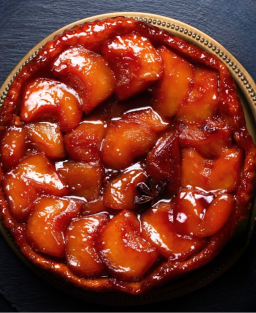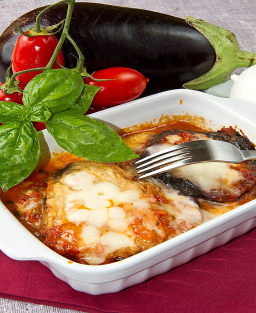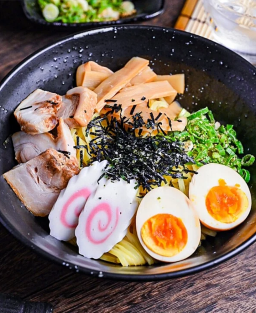- Out-of-Stock
The Traditional Recipe for Chashu – Japanese Marinated Pork, an Essential Ramen Topping (チャーシュー)
The Traditional Recipe for Chashu – Japanese Marinated Pork, an Essential Ramen Topping (チャーシュー)
The traditional recipe for Chashu (チャーシュー)—as found in Japanese ramen bowls (ラーメン)—has a complex history, mixing Chinese influence with Japanese adaptation. Here is a complete overview of its origin, history, and the authentic recipe: slow-cooked, rich, tender, and melt-in-your-mouth, served in the best ramen restaurants (ラーメン) in Japan.
Origin and History of Chashu (チャーシュー)
Chinese Influences (中国の影響)
The word "Chashu" (チャーシュー) comes from the Chinese 叉燒 (chā shāo), literally “fork-roasted pork,” referring to the famous Cantonese char siu: marinated then roasted pork.
Japan imported this dish in the early 20th century, especially through Chinese-style restaurants (中華料理, chūka ryōri) that adapted Chinese dishes to Japanese tastes.
Japanese Adaptation (日本の適応)
Japanese Chashu (チャーシュー) differs from Chinese char siu: it is not roasted but slowly braised, often in a mixture of soy sauce (醤油, shōyu), mirin (味醂, mirin), sake (酒, sake), sugar, and aromatics.
It has become an essential topping for ramen (ラーメン), alongside marinated eggs (味付け玉子, ajitsuke tamago) and nori (海苔, nori).
Regions (地域)
Chashu (チャーシュー) is popular all over Japan, but regional variations exist:
-
Tokyo (東京): strong soy sauce, rolled pork.
-
Kyushu (九州) (Hakata ramen 博多ラーメン): often saltier, fattier, with very tender pork fat.
-
Sapporo (札幌) (Hokkaido 北海道): sometimes spicier and lightly grilled after cooking.
Traditional Japanese Chashu Recipe (チャーシュー)
Ingredients (材料) (for 6–8 slices):
-
1 kg whole pork belly, ideally with skin (皮, kawa) (the skin becomes tender and adds softness)
-
100 ml soy sauce (醤油, shōyu) (preferably natural Japanese soy sauce without additives)
-
100 ml mirin (味醂, mirin) (sweet rice wine, adds sweetness and shine)
-
100 ml sake (酒, sake) (dry rice wine, adds depth and balance)
-
50 g brown sugar (to caramelize and balance umami)
-
1 large piece fresh ginger (crushed, to enhance and flavor)
-
4 garlic cloves (crushed, for aromatic depth)
-
2 to 3 green onions (ネギ, negi) roughly chopped (adds freshness during cooking)
-
Water (水, mizu) (to cover the meat)
-
Neutral oil (sunflower, grape seed, for searing)
Preparation: The true method, slow and deep
-
Preparing the meat: the base of successful chashu
Choose well-marbled pork belly, with a layer of fat and ideally the skin (皮, kawa) to ensure tenderness and flavor.
Roll the belly lengthwise tightly like a roll (巻く, maku).
Tie securely with butcher’s twine (料理用のひも, ryōri-yō no himo) to keep shape during cooking, ensuring even cooking and regular slices for serving.
Tip: You can also prick the meat lightly so the marinade penetrates well. -
Searing the meat: essential caramelization
Heat some neutral oil in a cast iron pot (鋳鉄鍋, chūtetsu nabe) or a heavy-bottomed pot.
Place the rolled belly and brown on all sides (about 4–5 minutes per side).
This “seals” the meat, locking in natural juices, and gives a lightly grilled, rich Maillard flavor (メイラード反応, Meirādo hannō), essential for chashu’s depth.
Be careful not to burn the meat; cooking should be even and controlled. -
Braising (called nidan yaki 煮炊き二段 in Japanese)
Add soy sauce (醤油, shōyu), mirin (味醂, mirin), sake (酒, sake), sugar, crushed ginger, crushed garlic, and green onions (ネギ, negi) to the pot.
Add cold water (水, mizu) to cover the meat entirely (about 500 ml, adjust depending on pot size).
Bring gently to a boil over medium heat, then carefully skim off foam and impurities.
Immediately reduce heat to low (弱火, yowabi) to maintain a gentle simmer.
Cover the pot partially (lid slightly ajar) to let some evaporation and concentrate flavors.
Simmer slowly for 3 to 4 hours, turning the meat every 30 to 45 minutes to absorb flavors evenly.
The term nidan yaki (煮炊き二段) refers to this double cooking: first searing, then slow braising—a tradition that guarantees tender, flavorful meat. -
Resting: crucial for texture and flavor
Once cooked, let the meat cool in its broth (出汁, dashi).
Ideally, refrigerate the pot (冷蔵庫, reizōko) overnight (or at least 6 hours).
This rest lets the meat absorb sauce aromas more intensely.
The natural jelly formed around the meat (from collagen コラーゲン, korāgen) also firms the texture slightly, making slices easy to cut. -
Slicing and serving
Carefully remove the twine (ひも, himo).
Using a very sharp knife (包丁, hōchō), slice the meat thinly (3 to 5 mm thick).
Chashu (チャーシュー) can be served cold or gently reheated.
For a spectacular effect, quickly torch the slices (バーナー, bānā) or pan-fry to lightly caramelize the surface before placing on a hot ramen bowl (ラーメン).
Using the leftover broth
Strain the broth through a fine sieve (こし器, koshi-ki) to remove solids.
This liquid is an umami concentrate (旨味, umami) that you can use to:
-
Marinate ramen eggs (味付け玉子, ajitsuke tamago)
-
Reheat your ramen soup (スープ, sūpu)
-
Drizzle over chashu (チャーシュー) at finishing for extra moisture
Historical and Cultural Notes
Though originating from Chinese cuisine (char siu), chashu (チャーシュー) was adapted in Japan for ramen (ラーメン) since the Taisho era (大正時代) (early 20th century).
The slow braising method (煮炊き, nidan yaki) became standard in ramen shops to create tender yet sliceable meat, perfect for presentation in a bowl.
The secret to good chashu (チャーシュー) is the balance of sweetness (mirin 味醂 and sugar 砂糖), umami (soy sauce 醤油), and fresh aromatics (ginger 生姜, garlic ニンニク, negi ネギ).
Master Tips for Perfect Traditional Japanese Chashu (伝統的な技術)
-
Tare (タレ): the aromatic heart of chashu
Tare (タレ) is the concentrated sauce in which chashu is slowly braised.
After cooking, strain finely to remove solids (garlic, ginger, onions, impurities).
This rich, fragrant liquid is precious:
-
It marinates ramen eggs (味付け玉子, ajitsuke tamago), giving them amber color and intense umami.
-
It enhances ramen broth (ラーメンのスープ) at the end of preparation.
-
It’s perfect for drizzling over chashu (チャーシュー) before serving, adding moisture and shine.
Pro tip: Store tare (タレ) in a sealed container in the fridge; it keeps for several days without issue.
-
Double cooking: a secret for perfect texture and flavor
Some expert chefs double-cook chashu (チャーシュー):
-
First slow, long cooking to tenderize the meat.
-
Then a quick second cook in fresh sauce to concentrate flavors and reheat the meat.
This yields extremely tender, flavorful chashu ready to slice.
-
Rolled with pork skin for extra tenderness
For even softer chashu (チャーシュー), some masters add a thin layer of pork skin (皮, kawa or rind) in the roll, in direct contact with the meat.
Thanks to collagen (コラーゲン, korāgen), the rind melts gently during braising (煮炊き, nidan yaki), creating a gelatinous, tender texture highly prized in traditional ramen (ラーメン).
It also adds richness balancing the pork belly fat. -
Adjusting cooking time to the piece size
Braising time (煮炊き, nidan yaki) depends on the size and thickness of the roll:
The thicker the piece, the longer the cooking needed for optimal tenderness.
Generally, count 3 to 4 hours for 1 kg of rolled belly, but adjust as needed.
Watch the texture: meat should be tender but not falling apart (aim for slices that hold shape). -
Storage and preservation: maintaining quality
Chashu (チャーシュー) keeps very well for several days or even a week if kept immersed in its broth (tare タレ mixed with cooking water).
For optimal storage:
-
Wrap the rolled chashu tightly in plastic wrap, or ideally vacuum-seal it (真空パック, shinkū pakku).
-
Keep refrigerated (冷蔵, reizō) in its juice to preserve flavor and texture.
This method also allows gentle reheating without drying out the meat.
Bonus: Presentation and Serving Tips
For authentic presentation, slice thinly (3–5 mm) and fan out the slices (扇形, ōgi-gata) on the ramen bowl (ラーメン).
Warm the slices slightly before serving to revive aromas.
Don’t hesitate to brush a little tare (タレ) on top for shine and moisture.
In summary, these master tips guarantee:
-
Ultra-tender chashu (チャーシュー) with perfect texture.
-
Rich, complex flavor from a well-balanced marinade.
-
Optimal storage and presentation to elevate your ramen (ラーメン).














